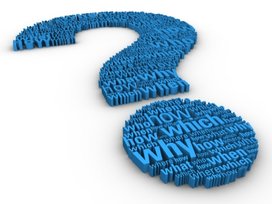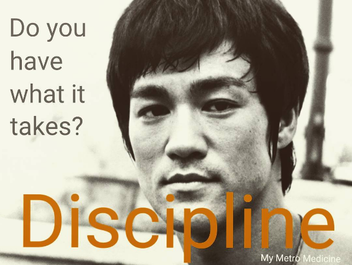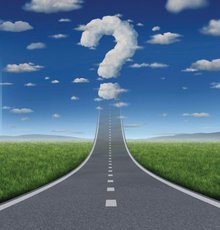 Source: Pexels.com Source: Pexels.com Throughout the course of history, there has long been a connection between martial artists and medicine. Traditionally, it was not uncommon to find a martial arts master who was also a physician or, at the very least, a highly-skilled healer. The reason behind this is simple being that by understanding how to control the mind and body in either role, one can also understand how the mind and body control an individual. Probably one of the most famous martial arts masters was Huang (Wong) Feihong who "developed a reputation as a peerless fighter and skilled physician". He also "founded a clinic known as Po Chi Lam, 'Precious Iris Woods', [which was] a reference to his skill with herbal medicine". Another notably skilled martial artist and physician was Hua Tuo, who was arguably the most famous doctor to have lived during the period of the Han Dynasty in China (206 BC-220 AD). As a physician, Hua Tuo would perform surgeries using anesthetics made for herbs. Additionally, he was renowned for his development of a series of health exercises that are based on the movements of animals and the principles found in martial arts traditions (Wu Qin Xi Qi Gong or Five Animal Play Qigong). Marshal Yue Fei, a famous military leader, is another perfect example of martial artist/physician who created the famous Eight Brocades Qigong Exercise. Learn these two famous Qigong forms online via the Personal Mastery and Growth Academy (Contact me for purchase details) Like most things over time, these arts transformed into new styles adapting to the changes of society and the invention of new types of weaponry, e.g. firearms. These transformations, together with the secrecy of familial styles of martial arts, the illiteracy of legendary masters, as well as the Cultural Revolution, slowly divorced these two arts that were once seen as inseparable. In today's society, there is a clear disconnect between martial arts and medicine in both education and in practice. I can recall learning, as part of the curriculum, Tai Chi and Qigong when I attended Oriental Medicine school. At the time, with a background of over a decade of practice in these arts, I entered the classroom with a sense of humility together with an old phrase I heard repeatedly during my training, "Any three people walking, [at least] one of them is your teacher." Needless to say, I was ready and willing to learn. Much to my surprise, upon the completion of the first set of classes, I can still recall the speed at which my jaw hit the floor. I was absolutely dumbfounded by how superficial and dissociated the information was from medicine, let alone martial arts. What happened to the knowledge that had been so powerfully transmitted through the ages of military warfare and medicinal advancement? Given this experience, I unfortunately have anything but high hopes for the remaining programs across the country. Even if the programs are strong in terms of the quality of information being disseminated, there is still an absence of knowledgeable Oriental Medicine practitioners being produced who can utilize martial arts and its principles with a medicinal approach. All disappointment aside, I do have faith that there still exists a strong connection between both martial arts and medicine. How? Simply because when people practice, they notice positive changes in their bodies and their minds. Additionally, the two arts themselves are based in theories and principles that align perfectly together. And personally, as an acupuncturist and a seasoned martial artist, I can see a clear connection between these two and apply them accordingly in my practice. Simply put, martial arts is an exchange between two or more people when being applied, whether fighting or "playing". It is also an exchange between one's external environment and internal environment. Medicine is the art that facilitates these exchanges by correcting them when they cannot be completed innately on their own. The natural laws of these exchanges were discovered through the observation and understanding of nature's affect on the health of living beings. Therefore, by expanding upon this knowledge and applying it, martial artists and physicians can potentially marry these two art forms once again. I suppose the title of this blog could also be reversed: Acupuncturists were also born to practice martial arts. For from the branches of the tree where martial arts and medicine coexist, they feed from the same root, bear the same fruit, and nourish all those who consume it. We as martial artists and Oriental Medicine practitioners are their gardeners as well as their guardians, and their survival depends solely upon us to keep them together. If you would like to learn more about how to use martial arts together with Oriental Medicine, you can contact me anytime via email or social media. You can also join our Tai Chi class on Saturdays or send you kids to our Martial Arts class on Sundays. Reference: Bisio, Tom. A Tooth From the Tiger's Mouth. New York, NY: Fireside, 2004.
0 Comments
Our mentally and emotionally-induced unnatural resistance to adjust our basic routines together with the seasons causes a clash between our internal environment (our physiology) and the external environment. Each morning for the past week, I have found myself to be a bit more tired than usual. There were nights when I went to bed a little late and nights I went to bed early, but it didn't make a difference. Some mornings I even felt a little tickle in my throat and others I noticed a slightly runny nose and little extra saliva in my mouth. Too much detail? Well there's a reason. When the seasons change, our bodies do the same. When the physical environment, and even the emotional environment, begin to change around us, our bodies, being the pros they are, automatically make an effort to change with them. If they didn't, we would enter an unfortunate state of dis-ease. Our mentally and emotionally-induced unnatural resistance to adjust our basic routines together with the seasons causes a clash between our internal environment (our physiology) and the external environment. This is the reason I personally prescribe the art and exercise of Tai Chi during these times of the year. Although there are numerous styles of this exercise, its overall gentle movements and calming nature provide one important element in this time of seasonal transition; Movement. A consistent Tai Chi practice during any seasonal transition, especially from summer to fall, will allow for a healthy experience of movement from one season to the next, no matter the type of climate. Whether you live in the northern or southern hemispheres, on the equator, or in Antarctica, there is always a transition in the environment, which has an inevitable effect on your body's physiology.
The main reason why practicing during the summer to fall transition is so important is due to the overall nature of the seasons. What I mean is, during summer exists the peak temperatures of the year in the external environment, which create physiological changes that lead to the release of heat (sweating) from our bodies. Or it can lead to something we refer to as warm diseases (think heat exhaustion) because our bodies are unable to release the heat inside of us leading to dangerous and sometimes life-threatening conditions. Additionally, as you may already be aware, there is a large amount of breathing occurring during the practice of Tai Chi. This breathing is a constant exchange of air and its contents between the external and internal environments which allow is to more rapidly create a level of balance between the two ultimately guided by a mindful approach to practice. After summer, we transition towards the colder seasons, first moving through fall; a season of dryness, chilly temperatures, and less and less movement in the outdoors (e.g. the beginnings of hibernation). So as you can see, if we live in these environments, then our bodies are certainly affected by them, and we must take appropriate action to adjust in parallel with them. What action is that? The action is Tai Chi. Which I believe, as a Licensed Acupuncturist, to be the single most effective form of exercise that offers and guarantees (with your consistent practice and close observation of your physiological changes) the opportunity for a healthy transition through any season change. So, if you usually struggle during these times of year, particularly from summer into fall and then into winter, start your Tai Chi practice as soon as you notice the seasons beginning to change. Don't wait! Unless of course you prefer to catch a cold, get the flu, dine on throat lozengers, suffer from sinus infections, and yell at the top of your fluid-filled lungs "I hate this season!" Peacefully, Children are You may have seen recently that I have decided to start a kid’s martial arts class starting on September 10. I want to share with you a few reasons why I chose to restart this old journey. First though, let me share with you a story about how I began working with children. Nearly 15 years ago, in a small western Pennsylvania town, I was offered my first opportunity to teach my very own children’s martial arts class. When I received the news, I was both excited and fearful. I knew it was something I was prepared to do, but I had zero experience doing it on my own. I thought for days about what material I should focus on when teaching these rambunctious 4 and 5 year olds. Dare I teach them to how to make a proper fist, how to kick, how to eventually wield a long wooden staff or metal sword? Was I qualified to do so? I mean, what was it my teacher saw in me that said “teacher” written on it? So many thoughts ran through my head, I had trouble standing on my own two feet from the weight of it all. Then, all of a sudden, one single image entered my mind. I imagined myself being a child. I wasn’t sure why, but I was immediately moved to tears. I began imagining myself standing there with these precious children having no other responsibility than simply trusting and following the instructions of the teacher in front of them. Then I began imagining myself being a child standing at the front of the room, as the teacher. Sounds silly, but let me share with you why this image completely changed my entire perspective on teaching to this day. In order to be a fearless leader, you have to be a fearless follower. I believe that in order to guide others, you must be able to imagine yourself walking with them, speaking their words, carrying out their actions as well as their ways of being. You have to become one of them for as long as it takes so that you understand how they best learn and absorb the in knowledge you are teaching them. And in order to be a fearless leader, you have to be a fearless follower. I had to make the decision to not be afraid to be a child again. I had to build trust through finding a way to connect, and in the moment of imagining myself as a child again I found exactly what I needed. I had no obligation to meet another adult's wishes or expectations, nor did I have any obligation to teach these children to do perfect punches, kicks, tumbling techniques, or prepare them to win a national championship like I would do several years later. I was simply there to teach. To teach like a child, to build a sense of trust, to be their friend, and to be their leader. I finally realized my ultimate goal when it came to working with children 15 years ago, and even to this day, was to help sculpt the future of every child by leaving a lasting positive impression in their minds and perhaps even a few words of wisdom all by seeing myself as a child. Our potential should never be clouded by the thoughts of another but rather lifted up by them. Our roles in life are so often clouded by our own expectations of what we think other people want us to do that we forget what it is we actually CAN do. Our potential should never be clouded by the thoughts of another but rather lifted up by them. The responsibility I see myself having as an instructor is to walk side by side with those I teach. My skillset and experience are the guiding instincts leading us together on the journey inwards to self-understanding and then again outwards to understanding the people in our lives.
So, if you think I am starting this new class to expand my business and add a little revenue to my balance sheet, you’ve only focused on the portion that matters to your typical business owner. I, however, am not your typical business owner. Yes, these factors are certainly important, but I believe focusing on people like you is a much more valuable approach, and it is the driving reason for what I do. My purpose, whether it be while I teach classes, treat patients, or speak at events, is to help as many people as possible, children and adults, experience what it truly means to live life at their fullest potential and help them understand how they can do it every day of their lives. In the end, my contribution to society is to enhance the future of our world by starting at the very beginning, with the pure and uninhibited minds and bodies of children. If I can help even one single child explore the amazing world around them through gentle guidance and endless encouragement, my purpose in life will have been fulfilled. With that said, I hope to see you at our first class on September 10. (More info on the class and registration can be found here.) Peacefully and Passionately,  Every time I hear the word motivation, I am taken back to my days of being a teenager when I stepped foot into my first martial arts school. It was a small school in an even smaller town in western Pennsylvania. The class had no more than 10 people, most of which were light years ahead of me in ranks. I'll never forget the feeling I had when I first entered the room to line up with the rest of the students. Because of having the lowest rank, I was told to stand at the beginning of the line. It didn't matter if my height had me towering over most of the students, I still felt smaller than anyone else in the room. My confidence was severely lacking, and my experience was non-existent. Plus, the constant thoughts running through my head were making me dizzier than I ever had been in my life. Then, the class started. We began our warm up, which to me at the time was worse than running a marathon. Although, I had never run one before, I imagined that this was what it would feel like, PAIN. Then we got around to practicing kicks and punches. When they brought out the striking pads and asked the higher level students to demonstrate proper technique, I recall the person holding the bag nearly toppling over onto 3 or 4 students next to him. All of us beginners chuckled, and we knew that we did not want to be behind the bag. Then, it was our turn. One by one we practiced our kicks and did our best to show proper form and deliver a powerful blow each time. After a few turns, I noticed an energy building up inside of me. And the person holding the bag noticed they had to hold on tighter and tighter each time I came around. Then once again, it was my turn. I stepped up to the bag; put myself in position; took a deep breath; and delivered one more kick. The next thing I new, the same person holding the bag lost their balance again and fell into a group of people just like the earlier demonstration. I was completely stunned and thrilled at the same time because I couldn't believe that I possibly kicked this person which as much power as one of the higher level students. My teacher saw this and immediately walked over. I assumed right away that I was in trouble for doing something I wasn't supposed to. Instead, to my surprise, he began explaining to the other beginners that I had done something RIGHT! Really? In my first class? He then asked me to be an example for the other beginners to observe. He adjusted my posture, corrected my form, and guided me with my breathing. Then he shouted powerfully, "Go!" I immediately kicked the bag as hard as I possibly could, and this time, my kick not only knocked the person off balance, it penetrated the bag and I unknowingly hurt the person's arm, but thankfully the injury was not serious. At that moment in time, I had tapped into a part of my mind and connected it with my body in the most exhilarating way possible. The only word I can use to describe that feeling is POWER. What exactly does this have to do with motivation?
Most people believe that before you can do the things you want, you need to first have the motivation. Like getting up and going to the gym, this takes a certain amount of motivation, doesn't it? Or, reading the book that has been sitting on your coffee table for more than a month, which you keep telling yourself you will get to. Still needs motivation, right? Or perhaps even making the first move to starting a relationship by asking somebody out on a date. Motivation, right? WRONG! ALL wrong! Motivation is not required to take action. ACTION is required to develop MOTIVATION! Remember the story I just told you about myself? If I hadn't discovered the feeling of inner power and strength after delivering a few hard kicks to a striking pad, do you think I would have returned to the class? If I hadn't followed the instructions of the teacher, do you think I would have had the energy to kick that hard, let alone complete the whole class? The answer is obviously no. Without developing my own motivation by taking a massive amount of effective action, I would not have become the national martial arts champion that I am today. And to this day, I am still able to create and tap into this ability by knowing it only takes one action to get me moving. Without taking action and committing yourself fully to that action, you will never develop the ability to generate your own motivation. You will only be an adequate follower. Not an outstanding leader. So, let me ask you. Are you satisfied with being adequate? Or do you want to be OUTSTANDING? Do you want to discover and experience the highest potential of your inner power? Do you want to develop an impenetrable level of confidence and master your ability to create your own motivation? Then you HAVE to TAKE ACTION! Once you do this, your first spark of motivation will be created. Then, by repeating your action again, and again, and again, you will have a blazing fire within you that will keep you motivated from the inside out for any moment when you need it. The bottom line is that if you have your heart and soul set on accomplishing a specific goal in your life and reaching the next level of success, you need to take action! You need to step up and kick the bag! Now get moving and start mastering your motivation! Live passionately, 
20 years ago, I made a choice that would change my life forever. I chose to enter a world that balances itself between the polarity of Yin and Yang; rotates on an axis called the Dao; and requires of its inhabitants to willingly "eat bitter", drown ourselves in blood, sweat, and tears, and risk masochistically bruising and injuring our bodies on a daily basis. To others, it is a world that sounds more torturous than peaceful. Regardless, this world is where many thrive on the nourishment of wisdom, develop a persevering attitude, and establish lifelong brother/sisterhoods. This is the world of Martial Arts.
How We Arrived Here
Prior to the 20th century, people knew the martial arts world as being one of great discipline, honor, respect, humility, and unquestionable devotion. Not only was it a way of life, it was also an employable service and a reputable form of business that brought strength, stability, and protection to local villages. Additionally, if a well-known martial artist was teaching in a specific area, it would draw attention far and wide attracting students from across the country ultimately bolstering the local economy. Consequently though, the downfall was the ensuing invitation for trouble through open challenges and "wars" between martial arts families/styles. Even to this day, the plague of open challenges is creating a rift between martial artists forcing practitioners to question its relevance, effectiveness, and overall place in today's society.
Throughout the 20th century, the martial arts world took a severe beating during specific times of global transition (for example, World Wars I & II, the Great Leap Forward, and the Cultural Revolution) forcing people to flee, go into hiding, nearly starve to death, or even be killed. However, thanks to the latter part of the 20th century, and with the help of Hollywood (and dare I say westernization), the world of martial arts continues to spin, but not at the same velocity as in the past. Today, many martial artists attempt to run their schools in a similar manner as schools of the past by kowtowing to their teachers, passing on knowledge to those who are "worthy", and carrying forward the lineage of which they have been accepted into. I myself being "raised" in this traditional and ritualistic manner treat my Kung Fu family in a similar way. As described later in this article though, these practices have not always had a positive effect on the evolution of martial arts. A Lesson from HistoryAn important lesson taught throughout history is that everything must come to an end. 
In all of my martial arts training, one of the most important lessons I have learned is how not to hold on both physically and mentally. Without learning this lesson, one's opponent immediately gains the advantage. So, why is it that so many martial artists cannot demonstrate an understanding of this lesson by clearly being unable to let go of the past? Why have they not accepted the fate of the martial arts world and begun the next stage of its evolution for the sake of the next generation? A disappointing truth is that our world can no longer thrive on ancient methods and traditional ways of thinking and acting. Not because they don't matter, but because much of the rest of the world is moving forward and shedding the parts that no longer serve their current direction (including certain aspects of martial arts). Why are we not doing the same?
Martial arts was brought to life by ancient wisdom, cultural transformation, and the gifts of nature. This life will soon expire if we do not begin to take action and shed the skin that has been peeling off for the last century. Therefore, I am urging you and every other martial artist to think seriously about the future of martial arts because the unwillingness to accept one's fate is futile, guaranteed. Furthermore, many years from now, you and I will be looked upon as the ancients of martial arts, and we will either be praised or we will be criticized for doing (or not doing) what was necessary. So, better than history coming to an abrupt "end", how about we look at it as a "new beginning". Ask the Right Questions
Here are some questions we can begin to ask ourselves regarding the fate of the martial arts world:
These types of scrutinous questions, as painful as they might be to answer, have the potential to help us design a new landscape for the sake of adapting to the needs of modern society. Today, the average student will rarely devote time to diligently practicing the movements they are taught. Nor will they spend much time studying the wisdom intricately woven into each action. Many teachers respond to this by teaching form after form without enforcing the need for repetition that allows students to understand more than just the sequence itself. This is proof that the world of martial arts has transformed based on the needs and wants of the student, not of the teacher, nor of the traditional style being taught. Additionally, the levels of discipline, motivation, and devotion no longer resemble those of the past. And due to the unwillingness to accept this unfortunate fact, many martial arts schools' enrollment numbers have dwindled, while at the same time, membership costs surge leading to survival being the only option. Consequently, this choice of survival has caused the sacrifice of something once considered to be sacred; tradition. Thus, the martial arts world now revolves around such things as colored belts handed out faster than Bruce Lee's one-inch punch. So what truly is the best way to train students for the sake of the future, and who should be the target clientele from here forward? Should we only focus on rigorously training the body? Should we limit ourselves to building a curriculum that requires only memorization skills for the forms which are taught? What truly is the best approach? In any stage of transition, there are always more questions than answers. Moreover, if you think you have the answers to all of the questions I have been asking, then you have not yet learned to listen. Have a comment on what you've read so far?
|
Posted here are...inspirational ideas on healthy living through eastern medicine, optimism, and possibility through empowerment. Archives
March 2020
Categories
All
|
HOURS & LocationMondays-Thursdays 5:30-6:30pm (Tai Chi & Qigong only)
Fridays 5:00-6:00pm (Tai Chi & Qigong only) Saturdays 1:00-6:00pm (Acupuncture only) |
CONTACT Us |




















 RSS Feed
RSS Feed



